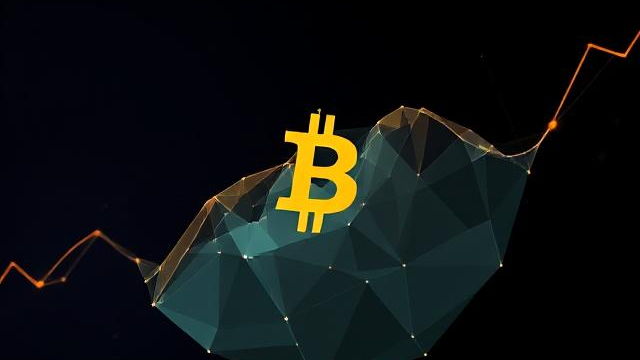As the crypto market evolves, one of the standout projects attracting attention is Polygon (MATIC). Positioned as a layer-2 scaling solution for Ethereum, Polygon continues to prove its value through scalability, lower transaction costs, and increased adoption. With the market's long-term growth in focus, many investors and enthusiasts are asking the big question: What is the Polygon price prediction 2030? In this article, we’ll delve into the factors influencing Polygon’s potential growth, analyze expert opinions, and provide insights into what could shape the future of MATIC’s price by 2030.
Understanding Polygon and Its Role in Crypto
Polygon is a protocol and framework designed to build and connect Ethereum-compatible blockchain networks. It aims to solve Ethereum's limitations, such as high gas fees and slow transaction times, by providing scalable and efficient solutions through sidechains and layer-2 scaling technology.
As of now, Polygon has established itself as one of the most used platforms in the decentralized finance (DeFi) and NFT ecosystems. With major partnerships and integrations, it has grown to become a crucial part of Ethereum’s broader infrastructure.
Historical Performance and Market Position
Before diving into the Polygon price prediction 2030, it's important to review its historical performance. MATIC, the native token of Polygon, was launched in 2019 at a very low price. It experienced significant growth during the 2021 bull run, reaching an all-time high of around $2.92 in December 2021.
Despite market volatility, MATIC has remained a top-20 cryptocurrency by market cap, showcasing its resilience and long-term potential.
Factors Influencing Polygon Price Prediction 2030
To estimate a reliable Polygon price prediction 2030, several critical factors must be considered:
1. Mainstream Adoption of Web3 Applications
Polygon’s growing role in hosting DeFi platforms, gaming dApps, and NFT marketplaces contributes to increasing demand for MATIC. If this trend continues into the next decade, MATIC’s value could benefit from expanded utility and adoption.
2. Institutional Investment
As institutions become more involved in blockchain infrastructure, Polygon may become a preferred network due to its Ethereum compatibility and cost efficiency. Increased institutional interest could significantly influence the Polygon price prediction 2030.
3. Ethereum Upgrades
Polygon's success is closely tied to Ethereum. With the ongoing Ethereum upgrades (such as sharding and layer-2 support), Polygon's compatibility may improve further. This synergy can solidify Polygon’s relevance and increase its valuation.
4. Regulatory Clarity
Global crypto regulations by 2030 will play a key role in determining how high MATIC can go. Regulatory clarity could foster greater adoption, which in turn would positively impact any long-term Polygon price prediction 2030.
5. Supply and Tokenomics
Polygon has a fixed supply of 10 billion MATIC tokens. With increasing demand and a capped supply, the basic economic principle of scarcity can potentially drive price growth over the long term.
Expert Polygon Price Prediction 2030
Different analysts and forecasting platforms have varying predictions for MATIC’s price by 2030. Here are a few notable opinions:
WalletInvestor offers a more conservative view, suggesting moderate growth over the years but remaining cautious due to market volatility.
Digital Coin Price predicts MATIC could reach anywhere between $10 and $15 by 2030, assuming steady adoption and consistent development.
CoinPriceForecast offers an optimistic estimate, projecting a price range of $12 to $18 by 2030.
While these predictions are not guaranteed, they serve as useful benchmarks to understand the market sentiment around Polygon price prediction 2030.
Bullish Case for Polygon in 2030
In a bullish scenario, if Polygon continues to expand its ecosystem, attracts major brands, and capitalizes on the rise of Web3, its price could exceed expectations. Analysts believe that under favorable conditions, MATIC could reach between $15 and $25 by 2030.
This scenario assumes:
- Widespread enterprise and developer adoption.
- Continuous improvements in scalability.
- Increased staking and reduced circulating supply.
- Strong overall crypto market growth.
Bearish Case for Polygon in 2030
On the flip side, a bearish case assumes stagnant development, rising competition from other layer-2 networks like Arbitrum or Optimism, or unfavorable regulations. In this case, the Polygon price prediction 2030 might land between $2 and $5, showing modest gains or stagnation over the decade.
Realistic Scenario: Balanced Outlook
A balanced and realistic Polygon price prediction 2030 considers both potential growth and market risks. With a steady growth trajectory, MATIC could realistically trade in the range of $8 to $15 by 2030. This would represent substantial returns for early investors, especially if Polygon continues to be a key player in the Ethereum scaling ecosystem.
Conclusion
Predicting crypto prices a decade into the future is inherently uncertain, but the foundation that Polygon is building today gives investors a reason to be optimistic. The Polygon price prediction 2030 depends on many dynamic variables — from technological progress and competition to global adoption and regulatory trends.
However, if Polygon maintains its growth trajectory and continues to innovate, it could be one of the biggest winners in the Web3 revolution by the end of the decade.
Investors should approach any price prediction with caution, diversify their portfolios, and keep informed about ongoing developments. While the future is never certain, Polygon’s strong fundamentals suggest that it could play a significant role in shaping the crypto economy of 2030.
Learn more:
https://blockdag.network/blog/polygon-price-predictions-from-2025-to-2030







